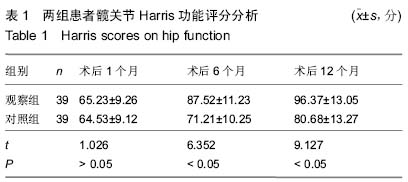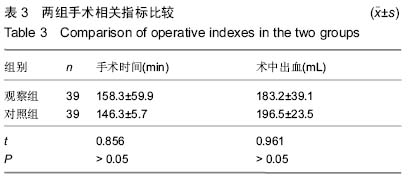| [1] 黄海样,吕厚忠,丁焕文,等.带旋髂深血管髂骨瓣移植治疗中青年股骨颈并股骨干骨折[J].现代医院,2011,11(1):19-20.
[2] 蒋林海,曲健荣,张才龙,等.股骨干骨折并同侧股骨颈骨折漏诊2例[J].临床骨科杂志,1999,2(2):115.
[3] 黄绪奎,杨志远.同侧股骨干合并股骨颈骨折16例临床分析[J].现代临床医学,2010,36(6):440-441.
[4] 黄绪奎,杨志远.同侧股骨干合并股骨颈骨折的临床分析[J].中外健康文摘,2010,07(15):28-29.
[5] 尹占民,刘秀.同侧股骨干及股骨颈骨折诊疗探讨[J].中国矫形外科杂志,2002,10(10):1023-1024.
[6] 赖灿斌,王占道,林美云,等.加压空心钉内固定加股方肌蒂骨瓣移植术治疗股骨颈骨折[J].中外健康文摘,2012,09(13):268-269.
[7] Larson AN,Bishop AT,Shin AY.Dorsal distal radius vascular-ized pedicled bone graft8 for seaphoid nonunions. Tech Hand Up Extrem Surg. 2006,10(4):212-223.
[8] 杨进,陈军,李维汉,等.带旋髂深血管髂骨移植空心加压螺钉内固定治疗青壮年股骨颈骨折38例[J].实用医学杂志,2006,22(24): 2878-2879.
[9] 郭峭峰,张春,张晓文,等.阔筋膜张肌髂骨瓣转移和加压空心螺纹钉治疗股骨颈骨折[J].中国骨伤,2008,21(4):275.
[10] 陈又年,刘莉.空心钉加血管蒂骨瓣治疗青壮年股骨颈骨折[J].实用骨科杂志,2007,13(11):654- 656.
[11] 于志亮,张宁,王斌,等.带旋髂深血管蒂髂骨瓣植入治疗青壮年早期股骨颈骨折[J].中国综合临床,2013,29(4):419-420.
[12] 匡亚华,李明,杜正根,等.带旋髂深血管蒂髂骨瓣转移治疗股骨颈骨折[J].实用骨科杂志,2010,16(4):294-296.
[13] 万新敏,王克,苟晓清,等.带旋髂深血管蒂髂骨瓣移植联合空心加压螺钉内固定治疗青壮年股骨颈骨折[J].河北医药,2013,(22): 3458-3459,3460.
[14] 邵先舫,刘志军,陈绍军,等.愈髋丸结合带旋髂深血管蒂髂骨瓣植骨治疗中青年股骨颈骨折的临床研究[J].湖南中医药大学学报, 2011,31(10):50-51,54.
[15] Ruecker AH, Rupprecht M, Gruber M, et al. The treatment of intertrochanteric fractures: results using an intramedullary nail with integrated cephalocervical screws and linear compression.J Orthop Trauma.2009,23(1):22-30.
[16] 吴国志.人工关节置换与加压螺钉内固定治疗高龄骨质疏松性股骨颈骨折的疗效[J].中国老年学杂志,2013,33(9):2020-2022.
[17] 孙彦豹,王静,金宝城,等.闭合复位动力髋螺钉联合防旋螺钉内固定治疗PauwelsⅢ型股骨颈骨折[J].创伤外科杂志,2013,(6): 513-515.
[18] 乔文龙,苑强,刘玄德,等.闭合复位空心加压螺钉内固定微创治疗股骨颈骨折[J].安徽医学,2013,34(12):1784-1786.
[19] 张楠,丁亮华,张晨然,等.股骨颈骨折三枚空心拉力螺钉和股骨近端锁定钢板内固定治疗比较[J].中国医师进修杂志,2013,36(35): 20-22.
[20] 李波,邹正,罗文中,等.不同股骨颈骨折分型与中青年股骨颈骨折预后的相关性研究[J].重庆医学,2013,42(3):297-298,301.
[21] 凌长敦.带旋髂深血管蒂髂骨瓣植骨治疗青少年类pipkin′sⅣ型骨折的研究[J].重庆医学,2014,(27):3646-3649.
[22] 钱炜,喻爱喜,漆白文,等.股骨颈骨折CT影像分析及临床意义[J].中华实验外科杂志,2013,30(12):2731-2732.
[23] 潘国标,何荣新,徐正建,等.ACPC/BMP植骨结合双头加压螺钉微创治疗老年股骨颈骨折[J].中国老年学杂志,2013,33(12): 2785-2787.
[24] 周锦春,郭敦明,王青,等.股骨颈骨折闭合复位加压螺纹钉内固定术后股骨头坏死多中心多因素相关分析[J].中华骨科杂志,2013, 33(5):549-554.
[25] 许军,赵玉驰,黄仁辉,等.带旋髂深血管蒂髂骨瓣和BMP人工骨移植治疗股骨头缺血性坏死[J].中国现代手术学杂志,2009, 13(4):281-283.
[26] Honma N, Mori S, Zhou H, et al. Association between estrogen receptor-β dinucleotide repeat polymorphism and incidence of femoral fracture. J Bone Miner Metab. 2013; 31(1):96-101.
[27] 李西要.内固定并带蒂骨膜瓣或骨瓣移植治疗股骨骨折骨不连[J].中国中医骨伤科杂志,2004,12(6):42-44.
[28] 冯朗,金水平.中空加压螺钉内固定加带旋髂深血管髂骨瓣移植术治疗中青年股骨颈骨折[J].临床外科杂志,2007,15(9): 636-637.
[29] 咸宝山,姜文学,刘富,等.带旋髂深血管蒂髂骨与骨软骨联合移植治疗股骨头坏死[J].中华骨科杂志,2010,30(1):62-66.
[30] 刘丰虎,卫永鲲,吴涛,等.同种异体骨联合股方肌骨瓣治疗股骨颈骨折不愈合[J].内蒙古中医药,2011,21(30):10-11.
[31] Gupta A. The management of ununited fractures of the femoral neck using internal fixation and muscle pedicle periosteal grafting. J Bone Joint Surg Br. 2007;89(11): 1482-1487.
[32] 孙建华,张庆胜,张新虎,等.微创空心钉内固定加血管蒂髂骨瓣植骨术治疗青壮年股骨颈骨折[J].中国骨与关节损伤杂志,2008,8 (23):676-677.
[33] 江波,宋薇.带旋髂深血管骨瓣移植加空心加压螺钉治疗青壮年股骨颈骨折[J].吉林医学,2012,33(17):3736-3737.
[34] 周运,靳嘉昌.股骨颈骨折微创手术治疗进展[J].华夏医学,2011, 24(6):734-737.
[35] 黄余亮,童培建,厉驹,等.外周血干细胞移植加内固定治疗股骨颈骨折[C].中华医学会第十四届骨科学术会议暨第七届COA国际学术大会,2012:59-60.
[36] 侯绍平,伏明松,兴会,等.股骨干骨折并同侧股骨颈骨折4例[J].中国骨伤,2001,14(2):126.
[37] 黄长明,童星杰,包锦昌,等.合并同侧股骨干骨折的股骨颈骨折[J].中国矫形外科杂志,2000,7(3):295-296.
[38] 吴敏,肖玉周,周建生,等.手术治疗同侧股骨干合并股骨颈骨折[J].中国骨与关节损伤杂志,2008,23(2):148-150.
[39] 马志伟,林岳平,柳惠江,等.股骨干合并同侧股骨颈骨折的治疗[J].浙江中医药大学学报,2006,30(4):380,382.
[40] 林英权,何伟东,林毅忠,等.重建钉内固定治疗股骨颈骨折合并同侧股骨干骨折[J].中国医药指南,2005,3(9):1056-1058.
[41] 郭勇敢,胡金明,杨慧芳,等.同侧股骨干骨折合并股骨颈骨折10例治疗分析[J].中国误诊学杂志,2008,8(3):724-725.
[42] 段建辉,谈立明,刘志军,等.带旋髂深血管蒂髂骨瓣植骨加空心加压螺钉治疗中青年股骨颈骨折68例总结[J].中医药导报,2006, 12(8):58-59.
[43] 徐永旭.带旋髂深血管髂骨瓣并内固定治疗股骨颈骨折[J].实用临床医药杂志,2010,14(9):43-45.
[44] 张万泉,钟雪平,饶放萍,等.带旋髂深血管蒂髂骨瓣植骨治疗青壮年股骨颈骨折[J].临床和实验医学杂志,2010,9(6):455-456.
[45] 王昌刚.加压螺钉内固定、带旋髂深血管蒂骨膜髂骨移植治疗青壮年股骨颈骨折20例的体会[J].贵阳中医学院学报,2012,34(2): 186-187.
[46] 谭志伟,冯经旺,徐杰,等.带旋髂深血管髂骨瓣结合空心加压螺钉内固定治疗青壮年股骨颈骨折[J].中华显微外科杂志,2012, 35(4):332-334.
[47] 危勇,林传松,杨爱勇,等.带旋髂深血管蒂髂骨瓣治疗股骨颈骨折27例[J].中华显微外科杂志,2011,34(3):240-241.
[48] 于志亮,张宁,王斌,等.带旋髂深血管蒂髂骨瓣植入治疗成人股骨头缺血性坏死[J].中国综合临床,2013,29(3):303-305.
[49] 朱权.带旋髂深血管髂骨瓣联合空心加压螺钉治疗股骨颈骨折50例疗效观察[J].海南医学,2014,(13):1924-1926. |



